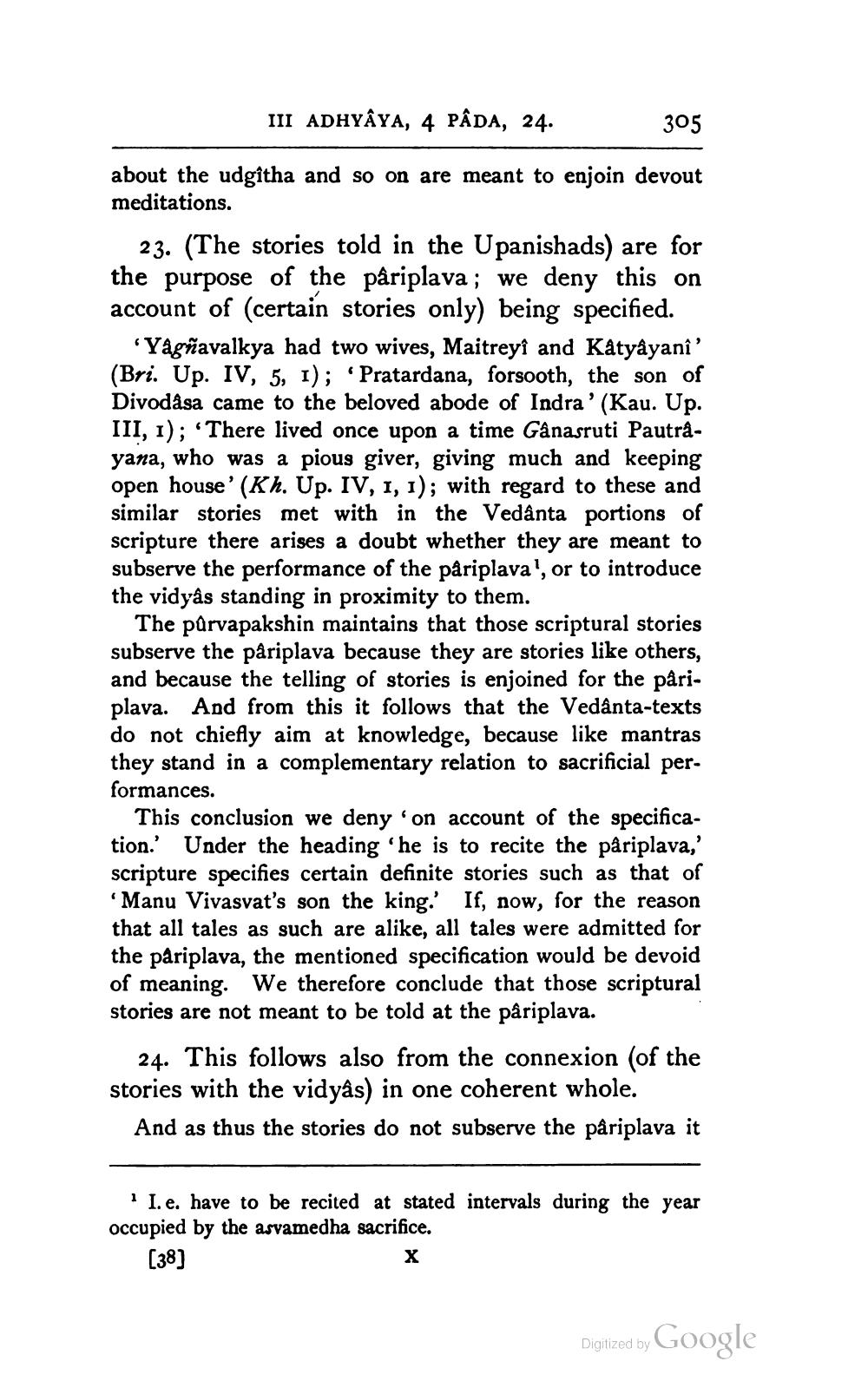________________
III ADHYAYA, 4 PÂDA, 24.
305
about the udgîtha and so on are meant to enjoin devout meditations.
23. (The stories told in the Upanishads) are for the purpose of the päriplava; we deny this on account of (certain stories only) being specified.
Yagñavalkya had two wives, Maitreyi and Katyayani' (Bri. Up. IV, 5, 1); 'Pratardana, forsooth, the son of Divodåsa came to the beloved abode of Indra'(Kau. Up. III, 1); 'There lived once upon a time Gânasruti Pautrayana, who was a pious giver, giving much and keeping open house' (Kh. Up. IV, 1, 1); with regard to these and similar stories met with in the Vedanta portions of scripture there arises a doubt whether they are meant to subserve the performance of the päriplava', or to introduce the vidyâs standing in proximity to them.
The purvapakshin maintains that those scriptural stories subserve the päriplava because they are stories like others, and because the telling of stories is enjoined for the päriplava. And from this it follows that the Vedanta-texts do not chiefly aim at knowledge, because like mantras they stand in a complementary relation to sacrificial performances.
This conclusion we deny 'on account of the specification.' Under the heading "he is to recite the päriplava,' scripture specifies certain definite stories such as that of Manu Vivasvat's son the king.' If, now, for the reason that all tales as such are alike, all tales were admitted for the päriplava, the mentioned specification would be devoid of meaning. We therefore conclude that those scriptural stories are not meant to be told at the päriplava.
24. This follows also from the connexion (of the stories with the vidyâs) in one coherent whole.
And as thus the stories do not subserve the päriplava it
* I.e. have to be recited at stated intervals during the year occupied by the asvamedha sacrifice.
[38]
х
Digitized by
Digilzed by Google




